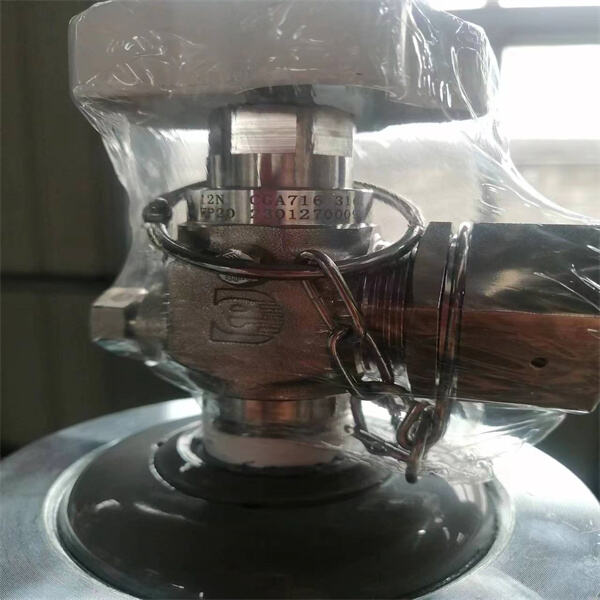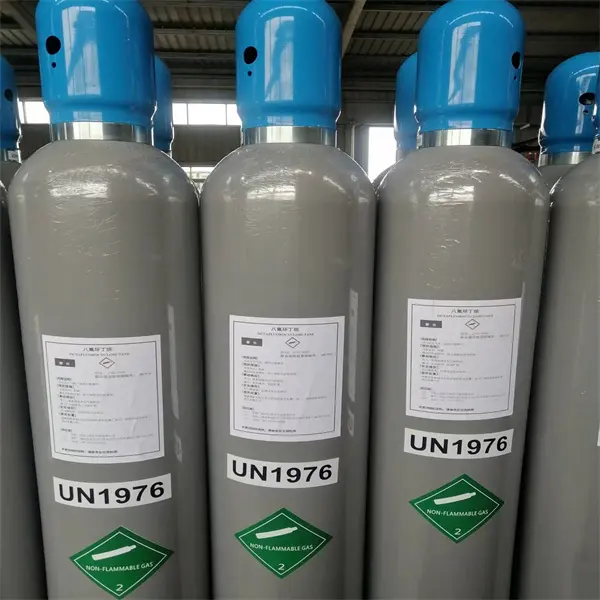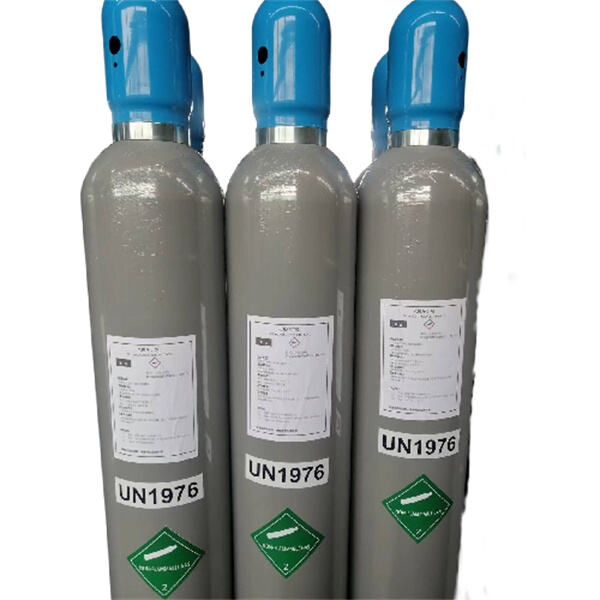Semikonduktor terdapat dalam segala sesuatu, dari smartphone dan komputer peribadi anda hingga mana-mana jenis gawai elektronik lain. Mereka perlu dibuat melalui proses tertentu dan menggunakan pelbagai jenis gas. Berikut adalah penerangan tentang pelbagai jenis gas yang digunakan oleh hanya satu industri dan bagaimana bahan-bahan teknologi tinggi ini digunakan untuk mencipta perkara yang kita bergantungkan. Pelbagai Jenis Gas yang Digunakan dalam Pengeluaran Semikonduktor Semikonduktor dibentuk menggunakan siri kompleks proses seperti pengikisan, penyetapan dan membersih. Ciri-ciri dan aplikasi berbeza bagi gas-gas ini bervariasi mengikut penggunaan atau keadaan atmosfera, sama ada ia berada di sekitar pembekal gas industri, pembekal gas semikonduktor khas yang terkenal, atau di makmal, memberikan spektrum yang luas yang sesuai untuk kesemuaannya dengan ciri-ciri kritikal yang diperlukan untuk menyiapkan tugas secara memuaskan. Pada hari ini, dalam kenyataan ini, kami memperkenalkan beberapa gas utama yang digunakan dalam proses pembinaan bahan. Silana SiH4: Gas ini tidak berwarna dan juga dikenali sebagai bahan elektronik berdasarkan silikon. Ia dikenali sebagai sangat dinamik dan bereaksi dengan cepat dengan oksigen dan air untuk membentuk oksida silikon SiO dan gas hidrogen. Silana boleh digunakan untuk menempatkan bahan berdasarkan silikon, seperti SiNx, sama ada dengan pantas atau pada suhu yang relatif rendah. Unsur Nitrogen N2: Gas ini tidak reaktif dan mencegah pengoksidaan. Ia diproduksi secara terus-menerus dan diperlukan untuk membersihkan peranti semasa proses pemeliharaan untuk mengeluarkan lonjakan O2 dan kelembapan. Gas seperti itu juga digunakan untuk memudahkan dan mengangkut aktiviti gas lain, bertindak sebagai gas pembawa dalam penyetapan uap nichrome dan penyetapan uap nichrome plasma ditingkatkan.
Hidrogen (H2) - Hidrogen digunakan sebagai gas pengurangan dengan mengeluarkan kotoran daripada bahan. Dalam pembuatan semiconductor, ia merupakan langkah penting kepada beberapa proses seperti annealing dan pembersihan. Selain itu, hidrogen membentuk gerbang logam yang diperlukan untuk pengeluaran peranti cmos lanjutan.
Oksigen Stabil (O2/O) - masukkan muka surat dan tempoh spesifikasi, dll. Gas O manakala oksigen digunakan dalam banyak proses plasma seperti etch dan strip/ash, ia juga berkhidmat sebagai tindak balas untuk mengoksida bahan-bahan berasaskan silikon kepada SiOx atau memperbaiki permukaan logam melalui pengoksidaan.
Klorin (Cl2): Klorin adalah tidak-logam berwarna kuning atau merah yang mengeluarkan asap dengan bau menusuk sebagai cecair. Gas ini, yang sangat reaktif dengan bahan-bahan berasaskan silikon, dioxide silikon, dan banyak logam seperti aluminium, telah mendapat pelbagai aplikasi dalam pengekalan struktur semiconductor.
Fakta bahawa gas digunakan dalam pengeluaran semikonduktor telah membawa kepada penciptaan elektronik kualiti tinggi, seperti yang dihasilkan oleh peningkatan keupayaan pengeluaran semikonduktor. Gas juga mempunyai beberapa kegunaan dan kelebihan yang penting dalam industri semikonduktor.
Gas seperti silana, ammonia dan nitrogen digunakan untuk memendap silicon oxide atau nitride yang akan menjadi filem tipis semikonduktor. Pendapan.
Pengikisan: Ia digunakan untuk mengeluarkan bahan atau pola yang tidak dikehendaki daripada semikonduktor menggunakan gas seperti chlorine, fluorin dan oksigen.
Gas proses: Hidrogen dan nitrogen diperlukan untuk operasi peralatan pembersihan semikonduktor (penyucian) supaya mengurangkan kekotoran yang mungkin mempengaruhi prestasi peranti.
Penyiraman: Salah satu penggunaannya yang utama adalah di mana ia bertindak sebagai gas penyiraman ketika kerja penyelenggaraan pada peralatan sedang berlangsung, ini untuk mengeluarkan oksigen dan kelembapan dari sistem dengan itu menjaga bahan dalam garis bebas.

Sebagai akibatnya, pencarian bahan dan proses yang semakin canggih tidak akan berhenti seiring perkembangan industri semiconductor. Gas yang diperbaiki adalah elemen penting untuk kemajuan semiconductor masa depan. Berikut adalah beberapa contoh gas teknologi tinggi dalam penghasilan semiconductor:
Fluorokarbon: Alasan gas yang difluorinasi baik digunakan untuk membuat reka bentuk litar terkini adalah kerana ia bertindak secara agresif dan pilih kepada kedua-dua etching (mengeluarkan bahagian) dan deposition (menambah bahagian).
CO2 - Gas inert yang digunakan untuk aplikasi seperti sputtering, CVD dan membersihkan.

Walaupun ia harus dilihat sebagai satu langkah ke hadapan dalam pembuatan semiconductor, disebabkan hanya oleh sistem penghantaran baru yang mungkin hari ini. Pengeluar sentiasa mencari cara untuk meningkatkan kecekapan, mengurangkan buangan dan meningkatkan keselamatan. Beberapa gas terbaru dan sistem penghantaran kimia canggih yang tersedia kini disenaraikan di bawah.
Sistem penghantaran gas (untuk gas yang secara tepat mengawal jumlah kecil gas / bahan kimia cecair yang diperlukan dalam semiconductor)
Sumber: Sistem Pembersihan Wafer Basah Lanjutan menggunakan plasma ozoon dan hidrogen peroksida untuk kaedah paling berkesan membuang kotoran daripada bahan semiconductor.

Gas-gas semiconductor boleh mendorong permintaan untuk elektronik yang lebih efektif tetapi juga membawa ancaman alam sekitar yang berbahaya. Terdapat beberapa program yang dilaksanakan untuk mengurangkan sisa dan daur semula gas di kalangan perkara lain dalam industri semiconductor. Ini tidak berbeza dengan cara pembuat mengupayakan menenangkan kebimbangan alam sekitar berkaitan dengan gas semiconductor;
Yang pertama dan paling terus, adalah Pengurangan Sisa -> Pembuat sentiasa mencari cara untuk mengurangkan kuantiti sisa yang dihasilkan semasa pengeluaran semiconductor. Seperti mengurangkan jumlah bahan kimia dan gas yang digunakan, daur semula bahan-bahan itu jika memungkinkan atau mencipta sistem gelung tertutup.
Menaikkan semula ' Pemprosesan semula gas dan bahan kimia akan menjadi kaedah penting lain yang membantu mengurangkan kesan alam sekitar. Pembuatan sisa boleh dikurangkan dengan lebih mudah oleh pengeluar yang membenarkan pemulihan, pembersihan dan penapisan semula gas atau bahan kimia yang digunakan semasa pengeluaran.
Ringkasan: Gas adalah asas kepada pengeluaran beberapa elektronik terbaik di luar sana. Pengeluar-pengeluar berdedikasi untuk memperbaiki kedua-dua gas canggih serta penyelesaian penghantaran yang menyokong proses optimum, pengurangan sisa dan keselamatan masyarakat. Sektor semikonduktor juga akan melangkah ke arah penggunaan gas dan jejak keseluruhan gas-gas ini telah melancarkan banyak kempen kelestarian dalam tahun-tahun terkini.
AGEM memahami bahawa setiap pelanggan memerlukan perkara yang berbeza dalam bidang gas khas, seperti gas kalibrasi. Kami memberi penyelesaian yang disesuaikan untuk memenuhi keperluan spesifik pelanggan kami. Jika anda memerlukan kuantiti kekalkapan tertentu, saiz silinder atau pilihan pengemasan, AGEM boleh bekerjasama dengan anda untuk menyuai produk mereka mengikut keperluan tepat anda. Tingkat penyesuaian ini akan memastikan anda mendapat silinder gas kalibrasi terbaik untuk aplikasi anda yang akan meningkatkan kecekapan dan prestasi keseluruhan. Julat produk AGEM tidak terhad kepada gas kalibrasi. Katalog AGEM merangkumi Gas Hidrokarbon, Halokarbon, Gas Kimia dan Gas Jarang. Anda boleh yakin bahawa AGEM mempunyai jenis gas tertentu yang anda perlukan.
Kebocoran dalam gas yang digunakan dalam pengeluaran semiconductor adalah masalah besar. Kami menguji kebocoran sekurang-kurangnya lima kali untuk memastikan kualiti. Syarikat kami menawarkan garis pengeluaran dan pengujian lengkap serta aplikasi kawalan kualiti yang ketat dan sistem perkhidmatan purnajual yang sempurna, untuk memastikan pelanggan menerima produk berkualiti tinggi dan julat penuh perkhidmatan. Kepedulian kami dalam memberikan perkhidmatan pelanggan yang cemerlang dan kualiti tinggi adalah sesuatu yang kami banggakan. Pasukan berpengalaman kami sentiasa bersedia untuk membantu anda dan memastikan anda mendapat perkhidmatan terbaik kepada kepuasan anda sepenuhnya. Perkhidmatan 24X7 kami adalah apa yang menjadikan kami berbeza. Kami di sini untuk anda sepanjang hari, setiap masa.
AGEM menawarkan pelbagai silinder kriogenik untuk menyejuk cecairan dan gas super-sejuk seperti oksigen cecair dan argon. Ia juga boleh menyimpan karbon dioksida, nitrogen dan nitrous. Kami menggunakan kicap dan alatan入口 yang diekspor untuk memastikan prestasi maksimum. Gunakan peranti penghemat gas dan beri keutamaan kepada penggunaan gas bertekanan tinggi dalam ruang fasa gas. Kicap keselamatan dua kali lipat memberikan jaminan kukuh untuk operasi yang selamat. Kami menawarkan pelbagai silinder kriogenik yang boleh memuatkan cecairan super-sejuk dan digunakan dalam kehidupan seharian.Penuh Isipadu: 80L/100L/175L/195L/210L/232L/410L/500L/1000LTekanan Kerja: 1.37MPa/2.3MPa/2.88MPa/3.45MPaSuhu Reka Bentuk Tangki Dalaman : +196Suhu Reka Bentuk Tangki Keluaran : 20oC+50oCPemisah: Vakuum dengan Lapisan BerlapisMedium Penyimpanan: LO2, LN2, LArLCO2, LNG
AGEM telah beroperasi di Taiwan selama lebih dari 25 tahun. Kami memiliki keahlian R dan D yang luas dalam bidang ini dan boleh menawarkan keahlian unik dalam bidang Gas Khas, Gas Bulk, dan Gas Kalibrasi di enam wilayah yang berbeza. Taiwan - Bandar Kaohsiung (Markas Besar, Pusat R dan D) India - Mumbai, Vadodara, Coimbatore, Pune, Bengaluru, Delhi China - Wuhan Timur Tengah - Dubai (UAE) & Arab Saudi United Kingdom - Cambridge Penyelesaian gas yang ditawarkan oleh kami merangkumi Perundingan Teknikal. Pembinaan & Penyeliaan. Ujian Sampel. Pemakanan & Penghantaran. Reka Bentuk Gambar. Pengeluaran.